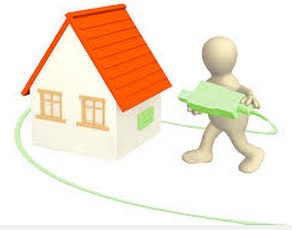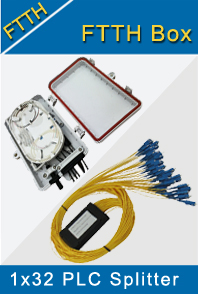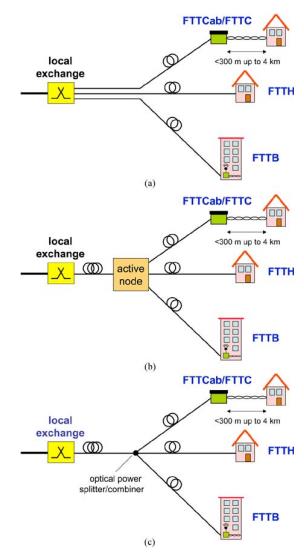-

- Sopto Home
-

- Special Topic
-

- FTTH Knowledge
-

- Three Fiber Access Network Architectures
FTTH Knowledge
- Solving the FTTH Rollout Problem in Multiple Dwelling Units
- WDM PON Introduction FAQ
- A Simple Overview of Optical Power Meter
- ODN is based on PON FTTH Optical Cable Network of the Device
- Using an OTDR to be an Expert in Fiber Link Testing
- How FTTH Broadband Works?
- Connections among Fiber Terminal Boxes & Patch Cables & Pigtails
- Easy to Install a Fiber Terminal Box
- What is Arrayed Waveguide Grating?
SOPTO Special Topic
Certificate



Guarantee
Except products belongs to Bargain Shop section, all products are warranted by SOPTO only to purchasers for resale or for use in business or original equipment manufacturer, against defects in workmanship or materials under normal use (consumables, normal tear and wear excluded) for one year after date of purchase from SOPTO, unless otherwise stated...
Return Policies
Defective products will be accepted for exchange, at our discretion, within 14 days from receipt. Buyer might be requested to return the defective products to SOPTO for verification or authorized service location, as SOPTO designated, shipping costs prepaid. .....
Applications

Sopto supply the best FTTH solutions for your network!
SOPTO Products
- Fiber Optic Transceiver Module
- High Speed Cable
- Fiber Optical Cable
- Fiber Optical Patch Cords
- Splitter CWDM DWDM
- PON Solution
- FTTH Box ODF Closure
- PCI-E Network Card
- Network Cables
- Fiber Optical Adapter
- Fiber Optical Attenuator
- Fiber Media Converter
- PDH Multiplexers
- Protocol Converter
- Digital Video Multiplexer
- Fiber Optical Tools
- Compatible
Related Products
Performance Feature
FTTH Knowledge
Recommended

Three Fiber Access Network Architectures
Basically, three architectures may be deployed for the fiber access network (see Figure1)
The first on is the Point-to-point architecture, where individual fibers run from the local exchange to each home. Many fibers are needed, which entails high first installation costs, but also provides the ultimate capacity and the most flexibility to upgrade services for customers individually. In the local exchange, as many fiber terminals are needed as there are homes, so floor space and powering may become issues
The second one is the Active star architecture, where a single fiber carries all traffic to an active node close to the end users, from where individual fibers run to each cabinet/home/building. Only a single feeder fiber is needed, and a number of short branching fibers to the end users, which reduces costs; but the active node needs powering and maintenance.
It also needs to withstand a wider range of temperatures than in-door equipment. In network upgrade scenarios, from the active node twisted copper pair lines (such as for ADSL up to some 4 km at speeds up to some 6Mbit/s, or VDSL at speeds up to some 50 Mbit/s for lengths of some 500 m) may run, or coaxial cable lines (such as for HFC), or even wireless links to the customer [fixed wireless access (FWA)]. The active node may be located in a cabinet at the street curb site (fiber to the cabinet (FTTCab) or FTTC), or in the basement of, e.g., a multi dwelling units building [fiber to the building (FTTB)] from where the communication traffic is run through-out the building by copper wired and wireless local area networks at 100+ Mbit/s speeds.
The third one is the Passive star architecture, in which the active node of the active star topology is replaced by a passive optical power splitter/combiner that feeds the individual short branching fibers to the end users.
In addition to the reduced installation costs of a single fiber feeder link, the completely passive nature of the outside plant avoids the costs of powering and maintaining active equipment in the field. This topology has therefore become a very popular one for introduction of optical fiber into access networks, and is widely known as the passive optical network (PON).

Figure1. Fiber access network architectures
(a) Point-to-point. (b) Active star. (c) Passive star (PON).
Related Knowledge:
FTTH Network Infrastructure Environment



